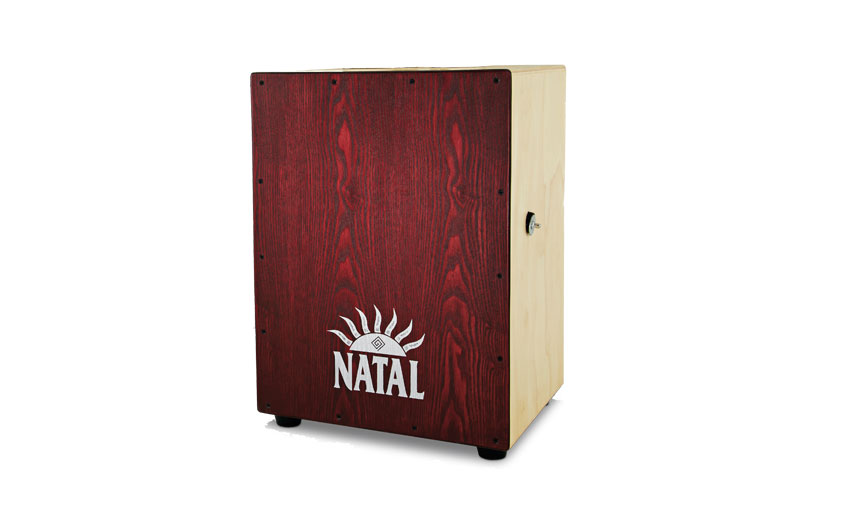MusicRadar Verdict
A decent sized and deep sounding budget cajon.
Pros
- +
Good size and deep, sophisticated tones. Offers decent value for money.
Cons
- -
Thin construction may not hold well over time.
MusicRadar's got your back
Marshall's purchase of Natal back in 2010 has resulted in more than a revamped central drum line, the firm's percussion range is also increasingly worthy of your attention. Here we take a look at one of the firm's Large cajons.
Build
Natal's cajons come in Large and Extra Large. Our review model is Large, 14" (36cm) wide, 113⁄4" (30cm) deep and 183⁄4" (48cm) tall.
Budget-conscious construction is of pretty thin ash ply with a more solid top seat and bottom, while a 12.5cm (5") sound hole is slap in the centre of the back panel.
Four chunky rubber feet provide extra stability. There's a strongly-figured wavy grain pattern on the frontplate and the whole box is well finished, satin smooth except for the seat which has a roughened surface for grip.
Hands On
"The overall vibe is quite bassy and warm, lending a touch of sophistication to what is, after all, just slapping a wooden box"
The Large Cajon is a good size, though the thin construction makes you wonder how long it will hold up. The thin ash walls give a loose and reverberant tone. The top slap is quite dark and even after partially loosening off the two top outer screws you get only a moderately sharp crack.
On the other hand the overall vibe is quite bassy and warm, lending a touch of sophistication to what is, after all, just slapping a wooden box.
Two short vertical lengths of 20-strand snares are fixed inside to a wooden former and loosely slipped under a nylon band at the top. They can be crudely moved closer or further away via a drum key-operated bolt on the side.
We got the most snare response somewhere in the middle region, not too tight or loose, same as with a conventional snare. Although this certainly is not a sophisticated strainer like you would find on a snare drum.
"This $399 item will incur over $578 in additional import charges": Price of Sonicware CyDrums drum machine more than doubles thanks to Trump tariffs
“For guitarists who crave an unrelenting, aggressive tone that stands out in any mix”: The Fortin Meshuggah head is the amp every metal player wants – now you can get its crushing tones in a pedal
“At least you know I sing live”: Lady Gaga apologises to fans as she falls victim to a mic malfunction during her second weekend set at Coachella










